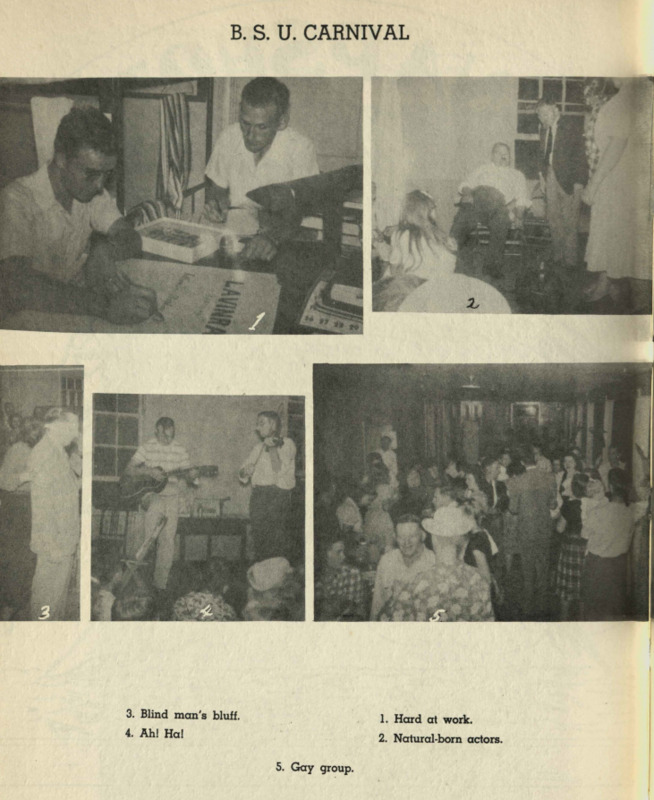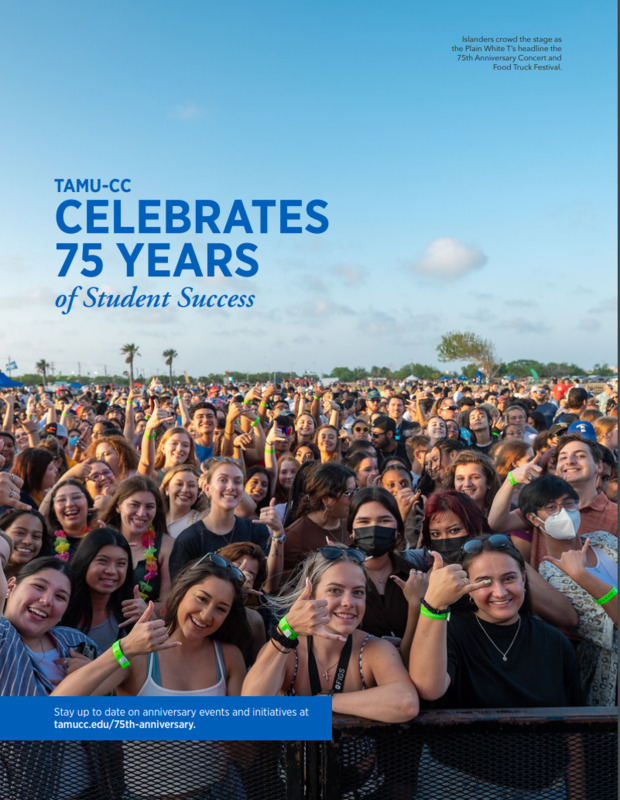Joe Hayen - A History of Student Engagement and Belonging
By: Joe Hayen
Introduction
Welcome to a History of Student Engagement and Belonging! Student activities are where memories are made, traditions are developed, and history is captured. These events grow student leaders and are an integral part of establishing a sense of belonging for students. University belonging is described as “students’ subjective feelings of connection and integration with their institution and campus community” (Pedler, et al., 2022). A sense of belonging is especially important when it comes to how students feel about the university and staff. In addition, students who have a stronger sense of belonging tend to have more academic self-confidence, higher motivation, higher levels of academic engagement and higher achievement (Pedler, et al., 2022).
Texas A&M University – Corpus Christi has a rich history of developing great leaders who have an impact on our community and beyond. Historically, higher education has not been a place where everyone is welcome or felt that they belong. While college campuses are slowly making improvements to their compositional diversity, institutions of higher education were not created to be racially inclusive, and they have been struggling with that legacy ever since (Collins, et al., 2020). As we reflect on the history of higher education it is important that we understand that the past is never simply the past. It contextualizes and informs the present (Cabrera, 2020).
This exhibit examines student engagement and belonging through photographs and seeks to address the following research question: How do photographs of student engagement activities portrait belonging from 1947 through present day? As you navigate this page, I encourage you to reflect on belonging. Based on your own identity, consider the question, “When do I belong?”
Analysis
There are many connections to be made by examining photos from the past. The unique thing about photographs is that we each view them from a different lens. Our identities, experiences, values, and other variables shape our perceptions. The following are descriptions of several photos incorporated within this exhibit:
Baptist State University was founded in 1947 and in 1948, their first yearbook, "The Silver King" was published. The yearbook highlighted the B.S.U. Carnival through a montage of pictures from the event. These pictures depict a variety of activities. Some of the event titles would not be used today as definitions and context has changed. In addition, while paging through the yearbook, BSU appears to be predominantly White in reference to study body, faculty, and staff. This also includes student groups such as "Los Conquistadores."
The 1957 yearbook highlights “Fish Week.” Fish Week is a tradition that is still in place at many college campuses and is a program to welcome incoming freshman student to campus. Based on the photos and description, Fish Week provided a variety of activities and instructions on "How to be a Good Fish" Here at TAMU-CC, we have modified the programming and now call this time "Waves of Welcome." Due to hazing and other unfortunate events, many initiation type activities are no longer allowed.
Parents and families are an important part of the college experience for students. Inviting them to campus through celebration is a great way to create belonging. I am proud of this program and intentional changes that have been made from 2006 to 2023. First, "Parent Weekend" has been renamed to "Family Weekend." For many families, two parent models are the not the norm. Using inclusive language promotes belonging. In addition, the photos used of families in 2023 are more diverse than 2006. The term 'parent' is argued to reflect traditional Western family ideologies and may not be suitable for describing current social structures (Palomin, 2020).
The "Womanless Beauty Pageant" was held in 2002. Based upon the description, it appears that male students (who participated) were "required" to wear woman's clothing to compete. This "tongue in cheek" event seems to bring some lighthearted fun to the campus where "testosterone offered a much more competitive feel to the affair." In retrospect with consideration of climate related to transgender rights and advocacy, I am unsure if this event would be held today. Furthermore, Texas has introduced legislation to censor certain types of "drag shows."
Implications and Connections
Through the decades each snapshot of a student engagement activity shows an increase in diversity, equity, and inclusion. These images, especially those in recent years, demonstrate the positive impact of the South Texas Border Initiative on acceptance and belonging.
In 1993, the Mexican American Legal Defense and Educational Fund (MALDEF) filed a class action lawsuit against the State of Texas on behalf of nine Mexican American organizations and Hispanic citizens living in a 41-county region of South Texas (Ortegon, 2013). The lawsuit alleged that the State of Texas discriminated against Hispanics by not providing colleges and universities located in the surrounding geographic area their fair share of state funding (Ortegon, 2013). The lawsuit pointed out differences in quantity and quality of academic programs at higher education institutions in South Texas compared to those in other areas of the state. Although the border region contained 20 percent of the state’s population, it only received 10 percent of the state’s higher education appropriations (Ortegon, 2013).
As a result of the South Texas Border Initiative (STBI), more than 880 million dollars was invested from fiscal year 1990 through fiscal year 2003 to fund programs and facilities at South Texas institutions of higher education (Ortegon, 2013). Here at Texas A&M University - Corpus Christi, there was a significant increase in enrollment after the South Texas Border Initiative success. The enrollment increased 92.35% between 1991 and 2001. In addition, enrollment increased 37.90% between 2001 and 2011 (Ortegon, 2013).
Legal cases have demonstrated to be successful, but require partnerships, community leadership, and most of all commitment and patience. Legal strategies for diversity in education as well as affirmative action initially focused on the 14th Amendment's equal protection but have shifted to First Amendment rights (Wells, 2020). This emphasis aligns with social justice by recognizing the value of diverse perspectives and experiences in shaping a well-rounded education. Universities' defense strategies highlight the cognitive and social benefits of learning in diverse contexts. This acknowledgment supports social justice by promoting the idea that diversity enriches the educational experience and prepares students for a global and interconnected world (Wells, 2020).
The South Texas Border Initiative case is a great example of the power of partnerships. Partnerships in academia are becoming more common due to policymakers seeing them as a strategic way to meet education and economic goals (Amey, et al., 2007). Positive results of leadership stem from the collaborative, ongoing, influential process based on the relationship between people (Wituk, et al. 2005). True leadership does not come from just having a large network or people to accomplish the task at hand, rather it is the relationships that are developed.
Recommendations and Future Research
Texas A&M University – Corpus Christi was designated as a Hispanic Serving Institution in 1992. This, along with the success of STBI, are great benchmarks toward accessibility, inclusion, and belonging. This growth requires continued education, training, and understanding of the students we serve and the cultures/families they represent. For example, Latina/o/x parents encourage higher education through practicable and relatable experiences. Parents rely on social networks to understand school and college processes, emphasizing the role of community support. (Palomin, 2020). Many parents aspire for their students to have better opportunities, breaking the cycle of family generations without access to higher education. Latina/o/x parents believe sending their students to college will change the family's life trajectory, providing more opportunities and a brighter future (Palomin, 2020).
I am proud to be a part of Texas A&M University – Corpus Christi and the progress that has been made toward inclusion and belonging. I am eager to see what future photographs will reveal about belonging and how future scholars will reflect on the photographs of today.
This project has been enlightening and motivating for me. After research, history harvest, and personal reflection, I have developed several recommendations for leaders in Higher Education:
Higher Education leaders should continue to challenge the status quo. This means shifting the institutional policies and practices away from those that norm the backgrounds and experiences of white students to ones rooted in the rich cultural traditions and expertise of communities of color (Cabrera, 2020). Higher education leaders should continue to follow the data, research, and most importantly, let student voice be heard. Higher Education leaders should continue to focus on community and relationship building and embrace the National Association of Colored Women’s Club’s motto, “lifting as we climb” as part of our behavior (Yosso, 2005). This means empowering those around us.
Finally, it is my hope and desire that every student at Texas A&M University – Corpus Christi knows and feels that, at this university, they are welcome and belong!


